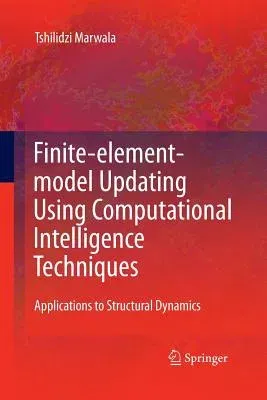Tshilidzi Marwala
(Author)Finite Element Model Updating Using Computational Intelligence Techniques: Applications to Structural Dynamics (2010)Paperback - 2010, 4 November 2014

Qty
1
Turbo
Ships in 2 - 3 days
In Stock
Free Delivery
Cash on Delivery
15 Days
Free Returns
Secure Checkout

Print Length
250 pages
Language
English
Publisher
Springer
Date Published
4 Nov 2014
ISBN-10
1447157168
ISBN-13
9781447157168
Description
Product Details
Author:
Book Edition:
2010
Book Format:
Paperback
Country of Origin:
NL
Date Published:
4 November 2014
Dimensions:
23.39 x
15.6 x
1.42 cm
ISBN-10:
1447157168
ISBN-13:
9781447157168
Language:
English
Location:
London
Pages:
250
Publisher:
Weight:
381.02 gm